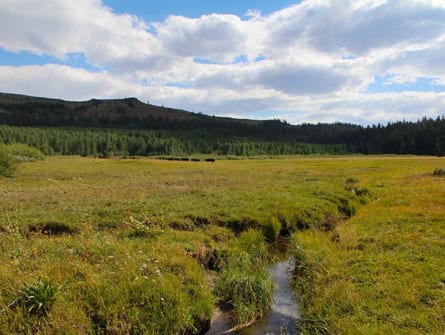Restoring meadows to reduce greenhouse gases and recover native habitat
California Trout was recently featured in Scientific American for our meadows restoration project in the Eastern Sierras. Meadow restoration will play a huge role in improving carbon storage and reducing atmospheric greenhouse gases. Meadows have become severely degraded from logging and grazing activities which compact soils, erode streams, and depletes native biodiversity. The impacts to wildlife are clear– decreased habitat, lack of water and food– but this is also a big issue for maintaining a healthy climate. Degraded land is unable to store as much carbon as it could in its original state. We are missing out on a major source of carbon storage since soil stores three times more CO2 than vegetation and the atmosphere combined. Less carbon stored in the earth means more released into our atmosphere, accelerating climate change.
Our researchers will be tracking the restoration project progress by comparing greenhouse gas activity between restored meadows and geographically similar degraded sites. In addition to the climate benefits, meadow restoration has numerous other ecosystem benefits. Habitat is improved for wildlife, such as the golden trout, willow flycatchers and other endangered species, and water storage capacity increases, a crucial benefit for our dry state.
“We’re poised to do something that’s never been done with alpine meadows”, says Mark Drew in the article, CalTrout’s Sierra Program Director. He was a leader in establishing the Sierra Meadows Partnership (formed in 2015) which includes multiple key partners, such as the U.S. Forest Service. The Partnership’s goal is to restore 30,000 acres of meadows within the next 15 years. (Read more about CalTrout’s meadows projects here).
See below for the full article from Scientific American, Can Meadows Rescue the Planet from CO2?
[gview file=”https://caltrout.org/wp-content/uploads/2017/05/Meadows-ScientificAmerican.pdf”]





